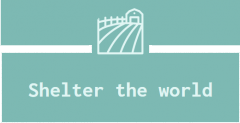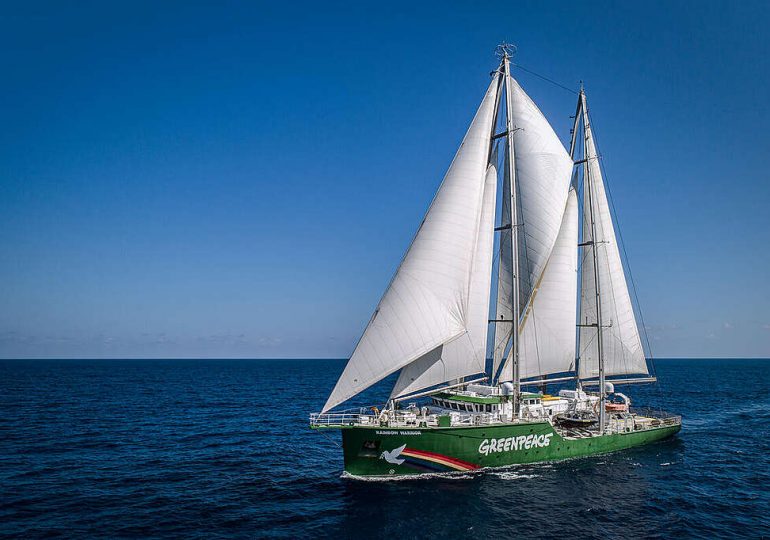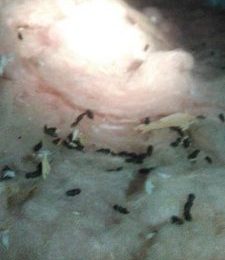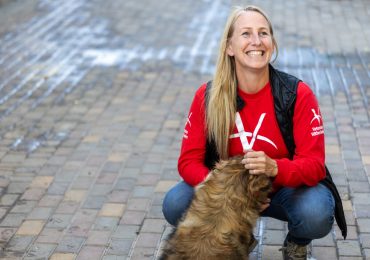Drone aerial of the Rainbow Warrior under sail in the Indian Ocean during the ‘Beyond Seafood’ campaign. © Greenpeace / Maarten Van Rouv
How do you hold on to hope, to the possibility of change for the common good, in the face of overwhelming grief or anger?
Two people who would have felt the weight of this question are Bunny McDiarmid and Henk Haazen, who were part of the crew when the Rainbow Warrior was blown up by French secret agents, 40 years ago this week, in Auckland Harbour—murdering 35-year-old photographer and father of two Fernando Pereira, who was on board at the time, and destroying the ship.
I had the chance to talk with Bunny and Henk—who were already part of the core of Greenpeace when I was still a child—when we were in the Marshall Islands together earlier this year. I had gotten to know Bunny during the period when she served as the Executive Director of Greenpeace Aotearoa, and then of Greenpeace International, but this was the first time I’d met Henk.
We had arrived for the first leg of the Rainbow Warrior’s mission to commemorate the fortieth anniversary of Greenpeace’s Operation Exodus—the evacuation of the people of Rongelap atoll to safety, after their home had become unlivable due to radiation poisoning from US nuclear testing.
It was about two months after Operation Exodus that the Rainbow Warrior, which was about to peacefully confront French nuclear testing at Mururoa Atoll, was bombed.
There’s not much that Bunny and Henk haven’t worked on or seen within the wide ambit of Greenpeace’s work, and sitting on the shore of the aquamarine ocean, there was a little time and space to talk.
I asked about the aftermath of the bombing. Not just the immediate haze of shock and grief, but how the people closest to the events, and the organisation itself, regrouped in the face of what had happened.
This question of resolve is something I think about every day. Perhaps it is a weight you carry too; as we experience and witness the deepening human and environmental consequences of global heating at the same time as governments and corporations become increasingly authoritarian and violent. It is a deeply personal question for each of us, and I am very grateful to Bunny and Henk for generously sharing their memories, especially given how often they must have had to talk about these things in the past forty years.
Together they described the surrealness; the astonishment and horror at the destruction and the killing of a colleague and friend. And soon after, the strangeness of being at the epicentre of a spontaneous uprising of global outrage that manifested in a massive surge of support for Greenpeace and our mission.
Out of the depths of mourning and shock, all who identified with Greenpeace were galvanised. ‘You can’t sink a Rainbow’ became the cry of defiance and purpose for Greenpeace activists, supporters and volunteers, along with friends and allies, across the world.
The Rainbow Warrior is in Marsden Wharf in Auckland Harbour after the bombing by French secret service agents. © Greenpeace / John Miller
A second ship bearing the name ‘Rainbow Warrior’ was launched, and would go on to peaceful action opposing French nuclear testing in the Pacific. The anti-nuclear movement continued to increase in strength, with the Comprehensive Nuclear-Test-Ban Treaty now having been ratified by 178 nations. French nuclear testing in the Pacific definitively ended in 1996.
Bunny recalled how in one of the gatherings in the months that followed the destruction of the Rainbow Warrior, Steve Sawyer (1956-2019) who was one of Greenpeace’s leaders and had been part of the ship’s crew at the time of the bombing, spoke up about what Greenpeace should do next. It was, in Steve’s words, the moment for ‘unreasonable ambition’—a transformative new campaign with the objective of protecting an entire continent.
Greenpeace had been calling for Antarctica to be made a ‘world park’ since 1979, but it was the cascade of support following the martyrdom of the Rainbow Warrior that enabled an unprecedented scale of operations to be realised.
From 1986 to 1992, Greenpeace campaigned for Antarctica to be accorded the status of a World Park and for a ban on all mineral exploration. This entailed scientific research, investigations, advocacy and lobbying all over the world, multiple missions by ships to the waters of Antarctica to conduct documentation and research, and, incredibly, the construction of the first non-governmental base on the continent—the World Park Base—which was permanently occupied between 1987 and 1991. The idea of Antarctica as a sacrosanct place, to be preserved for peace and science, took hold in the world’s shared public imagination.
And then, at last, that which had seemed far-fetched became impossible to refuse, and was done, as if it had always been going to happen. In 1991, the members of the Antarctic Treaty agreed to adopt a new Environmental Protocol, including a 50-year minimum prohibition on all mineral exploitation on the continent.
The ‘unreasonable ambition’ to save Antarctica, born out of the grief and anger of the Rainbow Warrior’s bombing, had been realised—not by Greenpeace alone, of course, but through the strength of conviction and united purpose of millions of people and countless organisations across the planet.
David with Bunny and Henk aboard the Rainbow Warrior III in the Marshall Islands
As I watched the coverage of the dawn service commemorating the 40th anniversary of the bombing on 10 July, I thought about Fernando Pereira, about the legacy of loss for his family and loved ones; about environmental activists all over the world who have been killed standing up for people and nature; and about all of us, who feel worry, uncertainty, or grief about the future of life on earth. I also thought, with love and gratitude, of Bunny and Henk; of Steve Sawyer (whom I never met); and of all those who were instrumental in alchemising a moment of deep grief and anger into unreasonable ambition.
And I thought too, of where we are now, and what lies ahead, offering a secular prayer to silently recommit to the principle that in these days of grief and anger at the outrages being done upon our shared planet, to do what must be done. Because the thing about being part of Greenpeace, is that it nurtures and nourishes your conviction that together, we will get there; that the shared work of all who seek a flourishing planet will be enough, and that our unreasonable ambition will yet be realised, to secure an earth capable of nurturing life in all of its magnificent diversity.
Thank you for taking the time to read this letter, written to you in the spirit of remembrance and resolve. Time again to go onwards, together.
Q&A
At an evening event a few weeks ago, I was asked about how we get the majority of people onside to protect climate and nature.
The reality is that the vast majority of people do favour climate action and nature protection. To quote just a few recent studies: almost 60% of people in Australia want more ambitious climate action; 97% of Australians want more nature protection; and most Australians want more than 75% of our oceans to be covered in marine protected areas.
In other words, the problem is not one of popular support—we have that. The problem, rather, is an inherited system of entrenched and interlocking structures of power that frustrates action at appropriate speed and scale, which is zealously defended by the vested interests that benefit from the status quo. This is why we engage in strategic campaigning—which enables institutional corruption to be overcome, and systems to be changed. That’s how we end up with transformative results like the protection of Antarctica.
Leave a comment




